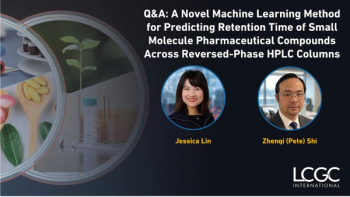
- January 2024
- Volume 20
- Issue 1
- Pages: 5
Cell Membrane Chromatography with HALO-tag Technology
Scientists in Xi’an, China have created a novel system for the analysis of cell membranes, based around haloalkane dehalogenase protein tag (HALO)-tag technology. Their research was published in Talanta.
Cell membrane chromatography (CMC) is effective for studying receptors with multiple transmembrane structures, such as MAS-related G protein-coupled receptor X2 (MrgX2). For CMC to function properly, maintenance must be kept for the complete biological structure of a membrane receptor. However, to obtain more convenient and stable CMC models, this system must be further improved.
For this study, the scientists used HALO-tag technology to create a new MrgX2/CMC model. The fusion receptors of this process were expressed in HEK293 cells, with silica gel being modified for the rapid capture of fusion receptors. This was done via one-step acylation using a substrate of HALO-tag (chloroalkanes). According to the scientists, their new CMC model (MrgX2-HALO-tag/CMC model) was quicker to prepare, more stable, and had a longer lifespan than previous MrgX2-SNAP-tag/CMC models.
Combined with a high performance liquid chromatography–tandem mass spectrometry (HPLC–MS/MS) system, the new model was used to identify bioactive components in traditional Chinese medicine. Sanggenon C and morusin were identified as anti-pseudo-allergic components. The MrgX2-HALO-tag/CMC model was also used to analyze ligand-receptor interaction. According to the system, the affinity order of four discovered ligands was desipramine < imipramine < amitriptyline < clomipramine. When compared to the results obtained using the MrgX2-HALO-tag/CMC model alone, the results proved consistent (1).
Reference
(1) Jia, Q.; Lv, Y.; Miao, C.; Feng, J.; Ding, Y.; Zhou, T.; Han, S.; He, L. A New MAS-Related G Protein-Coupled Receptor X2 Cell Membrane Chromatography Analysis Model Based on (HALO-Tag) Technology and Its Applications. Talanta 2023, 268 (1), 125317. DOI:
Articles in this issue
almost 2 years ago
ISC 2024 Live In Liverpoolalmost 2 years ago
Rising Stars of Separation Science: Shijia Tangalmost 2 years ago
Rolduc 2024almost 2 years ago
LCGC International 2024 New Product Review Call For Submissionsalmost 2 years ago
New Strategies for Oligonucleotide Aggregate Analysisalmost 2 years ago
ChromSoc Announces 2024 Medal Winnersalmost 2 years ago
Vol 20 No 1 The Column January 2024 North America PDFNewsletter
Join the global community of analytical scientists who trust LCGC for insights on the latest techniques, trends, and expert solutions in chromatography.




